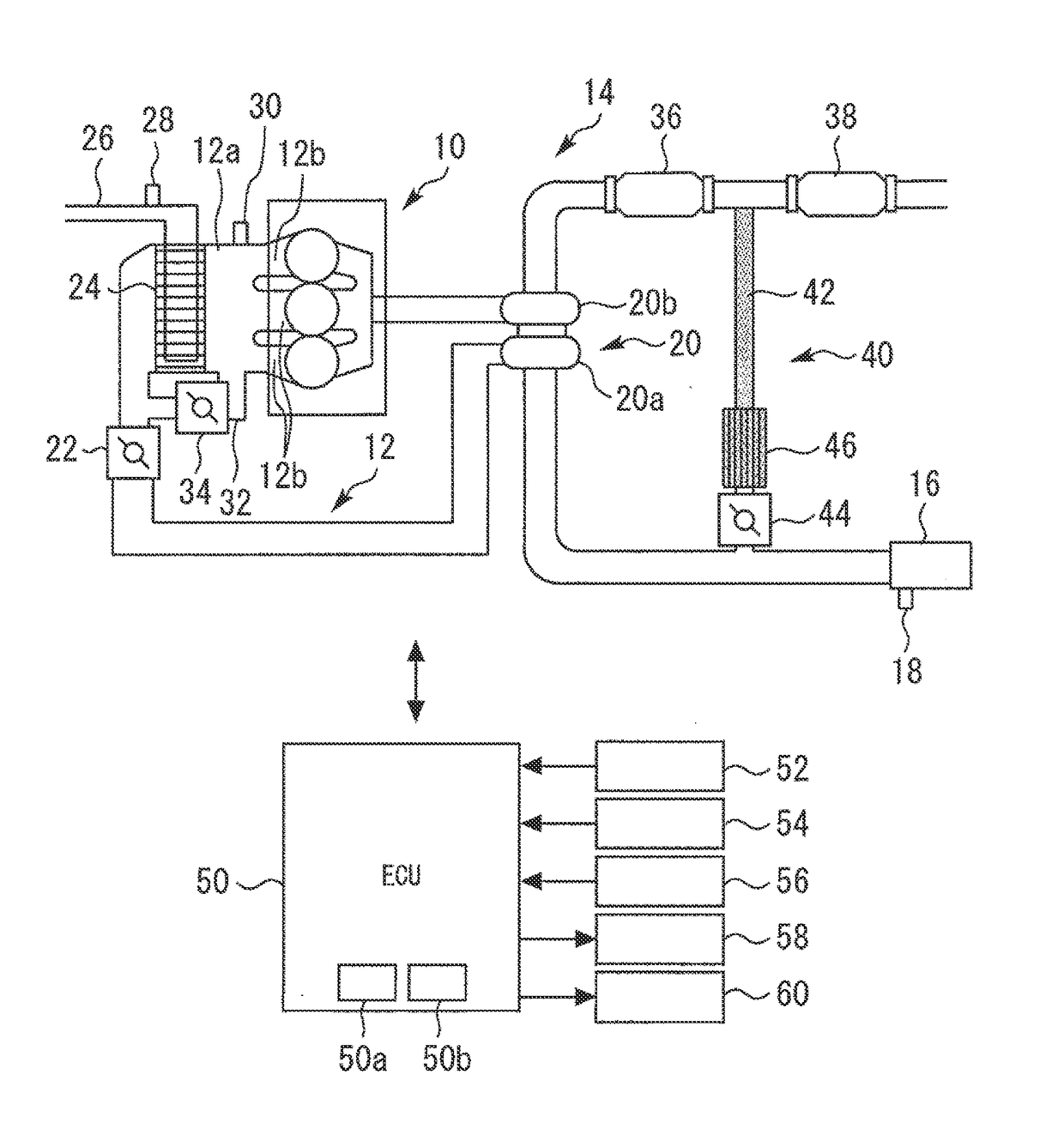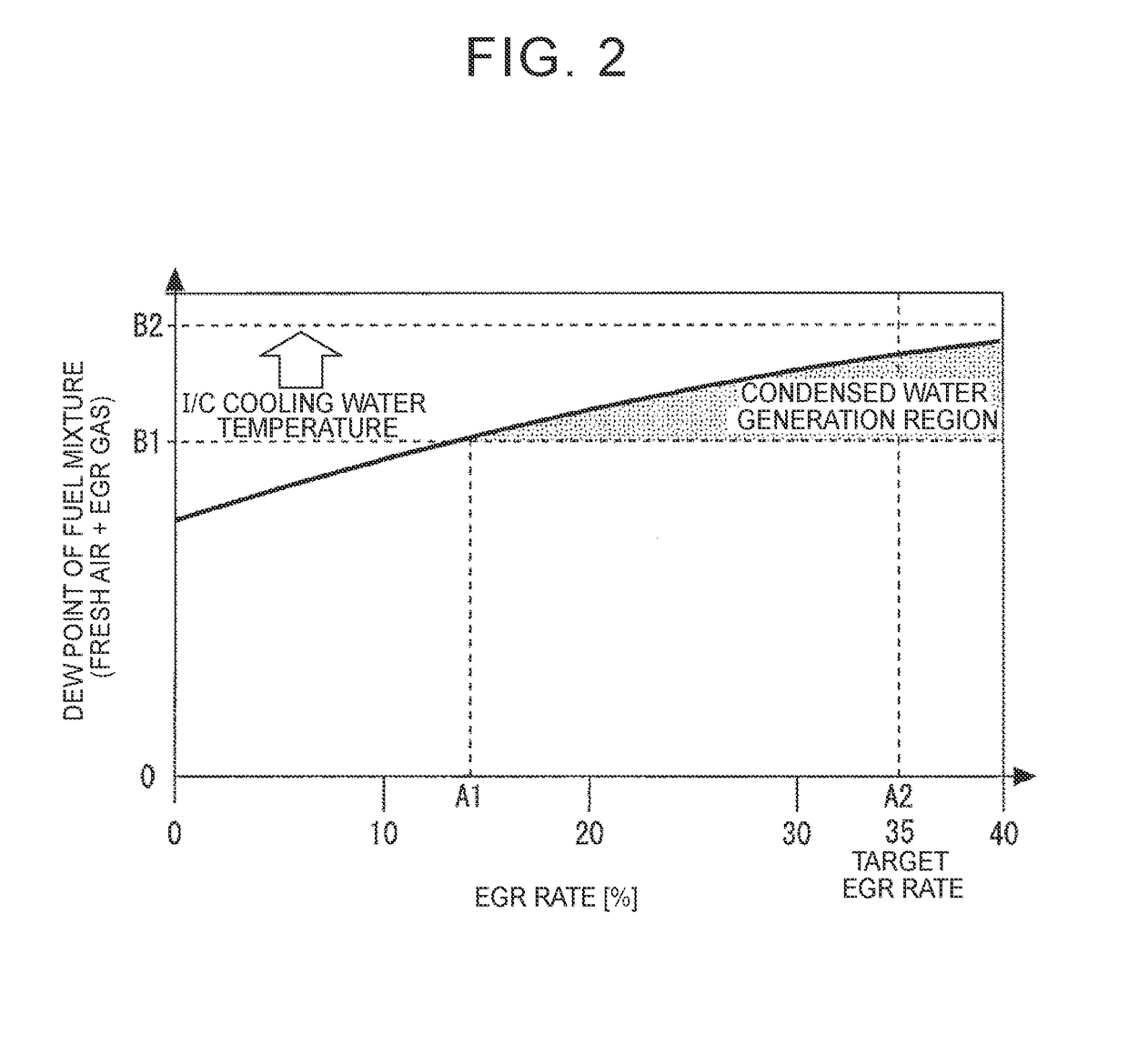Control device for internal combustion engine and control method for internal combustion engine
- Summary
- Abstract
- Description
- Claims
- Application Information
AI Technical Summary
Benefits of technology
Problems solved by technology
Method used
Image
Examples
embodiment 1
[0034]First, with reference to FIGS. 1 to 7, the following describes Embodiment 1 of the present disclosure.
[0035]System Configuration in Embodiment 1 FIG. 1 is a view to describe a system configuration of Embodiment 1 of the present disclosure. A system illustrated in FIG. 1 includes a spark-ignition internal combustion engine 10. The internal combustion engine 10 is an in-line three-cylinder engine as an example. An intake passage 12 and an exhaust passage 14 communicate with each cylinder of the internal combustion engine 10.
[0036]An air cleaner 16 is attached to a vicinal area of an inlet of the intake passage 12. The air cleaner 16 is provided with an airflow sensor 18 configured to output a signal corresponding to a flow rate of an intake gas (air) flowing through the intake passage 12.
[0037]The internal combustion engine 10 includes a turbosupercharger 20 as an example of a supercharger for supercharging an intake air. A compressor 20a of the turbosupercharger 20 is placed in...
embodiment 2
[0096]Next will be described Embodiment 2 of the present disclosure with reference to FIGS. 8 and 9.
[0097]System Configuration in Embodiment 2 In the following description, the configuration illustrated in FIG. 1 is used as an example of a system configuration of Embodiment 2.
[0098]As described in Embodiment 1, a change of the actual EGR rate with respect to a change of the target EGR rate delays during the transient operation. In the LPL-type EGR device 40 having a long passage length from the EGR gas inlet to the cylinder, such a delay is large.
[0099]The present embodiment is targeted for an example in which the low EGR rate region is shifted to the high EGR rate region at the time of a transient operation along with an acceleration request (hereinafter referred to as “acceleration transition”). In this example, the actual EGR rate becomes insufficient with respect to the target EGR rate because of the delay. Meanwhile, a change of the intake gas temperature by a cooler bypass mec...
embodiment 3
[0124]Next will be described Embodiment 3 of the present disclosure with reference to FIGS. 10 and 11.
[0125]System Configuration of Embodiment 3 In the following description, the configuration illustrated in FIG. 1 is used as an example of a system configuration of Embodiment 3.
[0126]The present embodiment is targeted for an example in which the high EGR rate region is shifted to the low EGR rate region at the time of a transient operation along with a deceleration request (hereinafter referred to as a “deceleration transition”). In this example, reversely to the acceleration transition targeted in Embodiment 2, the actual EGR rate becomes excessive with respect to the target EGR rate because of a delay in change of the actual EGR rate. Accordingly, when the I / C bypass valve 34 is closed immediately with disregard to the delay, in response to a request of the low EGR rate region at the time of deceleration, the low intake gas temperature TL is used under the “high EGR rate.” As a re...
PUM
 Login to View More
Login to View More Abstract
Description
Claims
Application Information
 Login to View More
Login to View More - R&D
- Intellectual Property
- Life Sciences
- Materials
- Tech Scout
- Unparalleled Data Quality
- Higher Quality Content
- 60% Fewer Hallucinations
Browse by: Latest US Patents, China's latest patents, Technical Efficacy Thesaurus, Application Domain, Technology Topic, Popular Technical Reports.
© 2025 PatSnap. All rights reserved.Legal|Privacy policy|Modern Slavery Act Transparency Statement|Sitemap|About US| Contact US: help@patsnap.com



